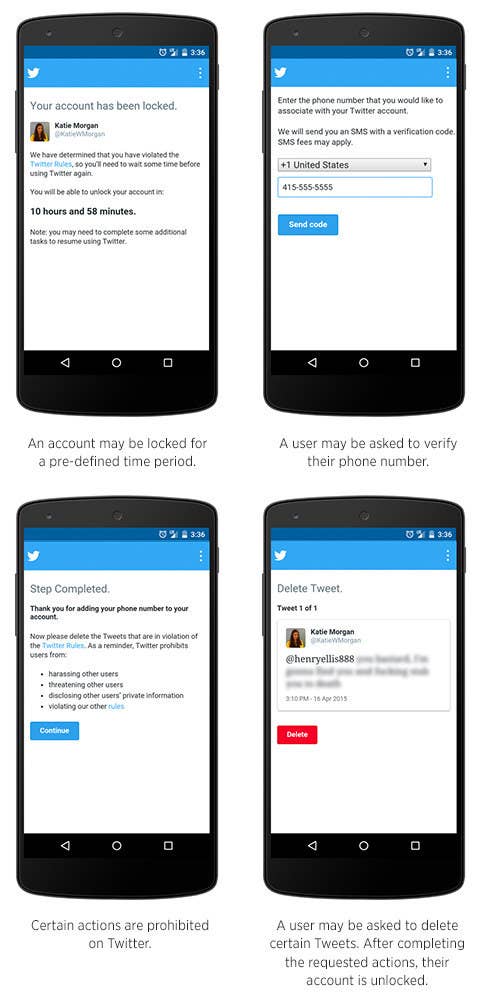Twitter continued its efforts to curb harassment on its platform with updates to its policy and products today. It's one of several such efforts Twitter has taken since late last year. Both of the efforts the company announced today are very much in line with what Twitter CEO Dick Costolo told BuzzFeed News in February, when he said the company was working on ways to both effectively ban users, and to make it harder for abusive speech to be heard on the platform.
To that end, Twitter has expanded the language in its rules about what constitutes a violent threat. As of today, April 21, these now include not just specific direct threats, but also "threats of violence against others or promot[ing] violence against others." To enforce this and other rules, Twitter's enforcement team can now lock users out of their accounts for a limited time — basically a time-out. It also pointed to existing tools it can deploy, such as requiring someone to provide information like a phone number, or even delete previous tweets in order to regain access.

The other update Twitter made today makes it more difficult for abusive speech to be heard, without expressly banning it. The company says it is testing a new feature to automatically "identify suspected abusive Tweets and limit their reach." It is looking at things like how old the account is (people often set up new accounts with the purpose of harassing others) and how similar the tweet is to others that it has already flagged for abuse. It says that this will not "affect your ability to see content that you've explicitly sought out."
While Twitter did not provide specific detail on how this works, it might mean limiting what shows up in a person's mentions. In an interview with BuzzFeed News in February, Costolo laid out one such scenario, noting that "people should have a right to speak freely on the platform, but you don't necessarily have a right to have your mentions of me show up in my mentions timeline with whatever you choose to say, and your response is that I can call you whatever I want to call you."
